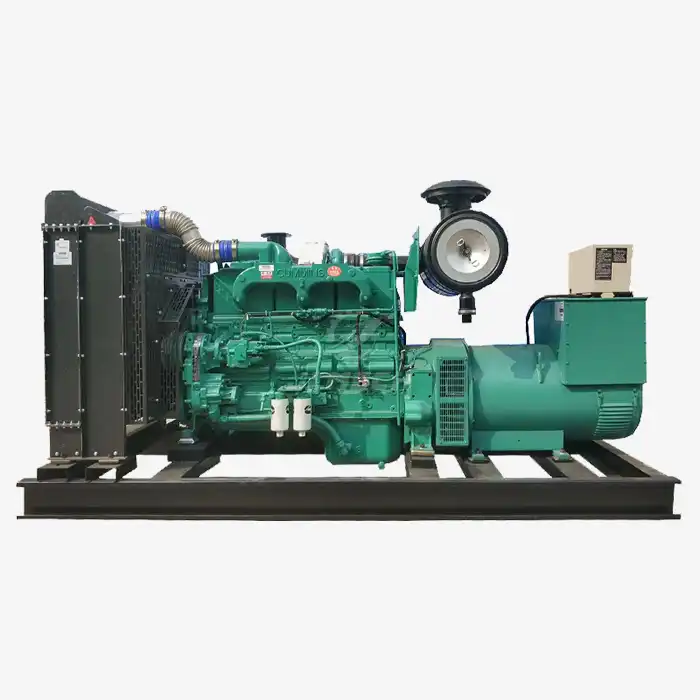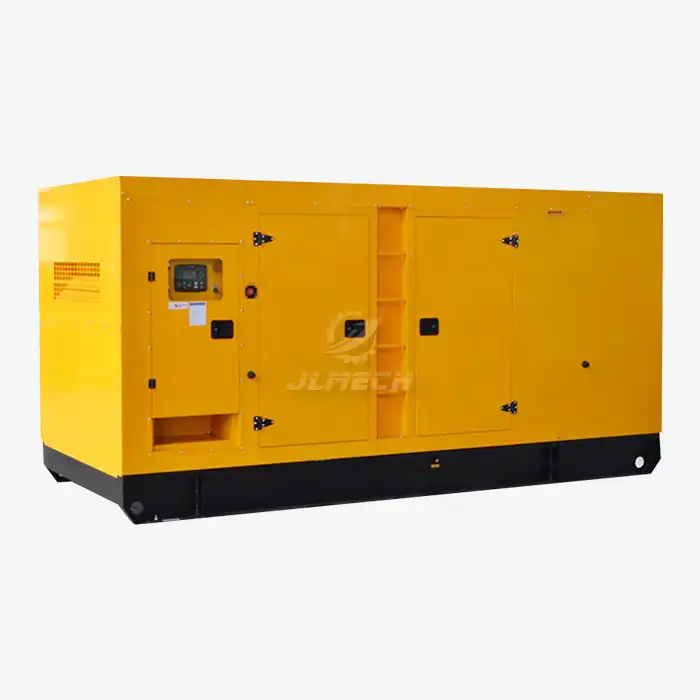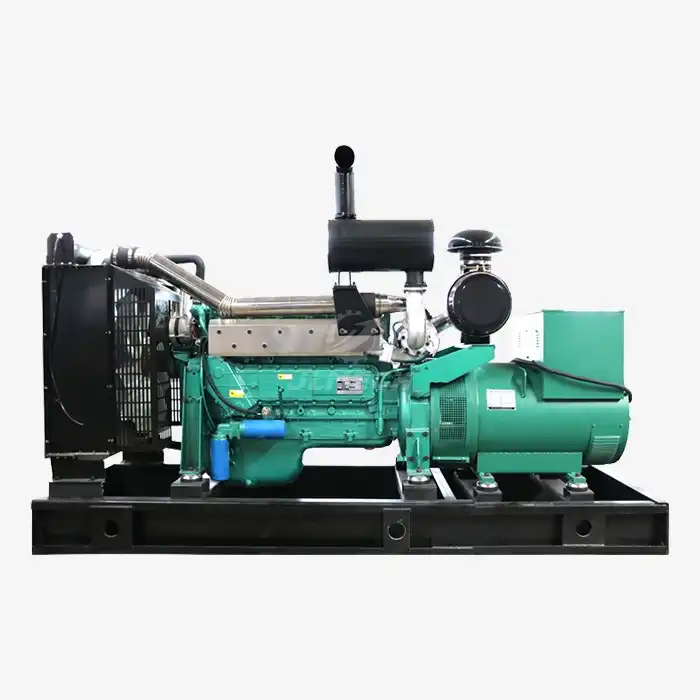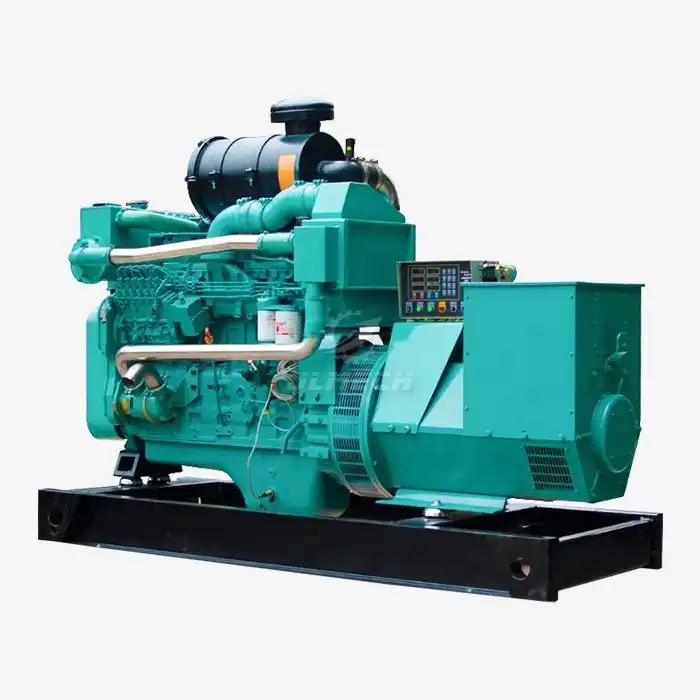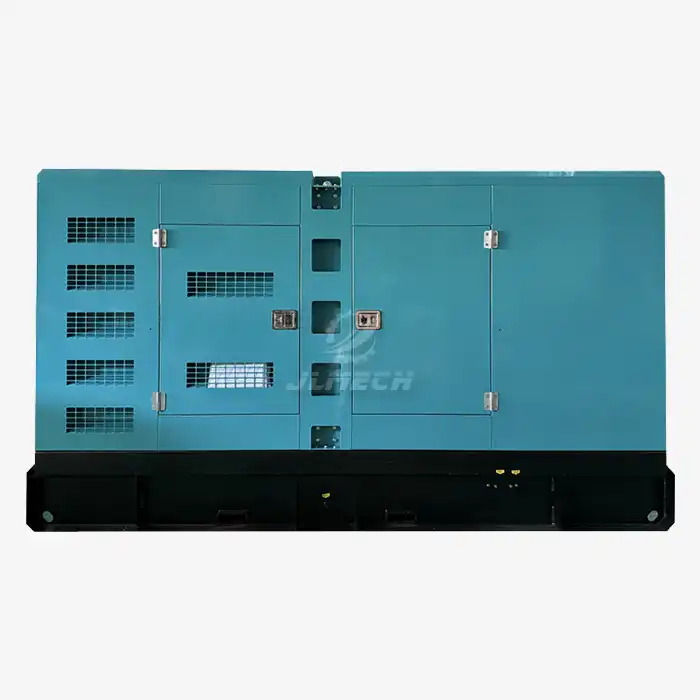Step-by-step guide to diagnosing power instability in silent diesel generators
When faced with power fluctuations in your silent diesel generator, it's crucial to approach the problem methodically. This step-by-step guide will help you navigate the troubleshooting process efficiently:
1. Safety first: Prepare for inspection
Before beginning any diagnostic procedures, ensure the generator is shut down and cooled. Wear appropriate personal protective equipment (PPE) and consult the manufacturer's manual for specific safety guidelines.
2. Visual inspection
Conduct a thorough visual check of the generator, looking for:
- Loose or damaged wiring connections
- Signs of overheating or burning
- Fuel or oil leaks
- Damaged or worn belts and hoses
3. Check fuel quality and supply
Poor fuel quality or an inconsistent fuel supply can lead to power fluctuations. Verify that:
- The fuel tank is adequately filled
- Fuel lines are clear of obstructions
- Fuel filters are clean and not clogged
- The fuel meets the required specifications for your generator
4. Examine the air intake system
A restricted air flow can cause power instability. Inspect:
- Air filters for cleanliness and proper fit
- Air intake pipes for any blockages or damage
5. Assess the exhaust system
A compromised exhaust system can affect generator performance. Check for:
- Exhaust leaks
- Blocked or damaged mufflers
- Proper back pressure levels
6. Evaluate electrical connections and components
Electrical issues are often at the heart of power fluctuations. Examine:
- All electrical connections for tightness and corrosion
- The automatic voltage regulator (AVR) for proper functioning
- Circuit breakers and fuses for any signs of tripping or damage
7. Monitor engine performance
The generator's engine plays a crucial role in power stability. Observe:
- Engine speed and governor operation
- Oil pressure and temperature
- Coolant levels and temperature
8. Conduct load testing
Perform a load test to simulate real-world conditions and observe the generator's performance under various load levels. This can help identify issues that may not be apparent during idle operation.
By systematically working through these steps, you can effectively diagnose the source of power fluctuations in your quiet diesel generator. Remember, if you're unsure about any aspect of the troubleshooting process, it's always best to consult with a qualified technician or the generator manufacturer.
Can a faulty alternator cause erratic power output in quiet diesel generators?
A faulty alternator is indeed one of the primary culprits behind erratic power output in quiet diesel generators. The alternator is responsible for converting the mechanical energy from the engine into electrical energy, and any issues with this component can lead to significant power fluctuations.
Understanding alternator function in diesel generators
The alternator in a diesel generator consists of several key components:
- Rotor: The spinning part that creates a magnetic field
- Stator: The stationary part containing wire coils where electricity is generated
- Voltage regulator: Controls the output voltage
- Rectifier: Converts AC power to DC power for battery charging
When any of these components malfunction, it can result in unstable power output. Here are some specific ways a faulty alternator can cause power fluctuations:
1. Worn brushes or slip rings
Brushes transfer electrical current between the spinning rotor and the stationary parts of the alternator. As these wear down, they can cause intermittent contact, leading to fluctuations in power output.
2. Faulty voltage regulator
If the voltage regulator fails to maintain a consistent voltage level, it can result in power surges or drops.
3. Damaged windings
Shorts or opens in the stator or rotor windings can cause inconsistent power generation.
4. Bearing failure
Worn bearings can cause the rotor to spin unevenly, leading to fluctuations in the magnetic field and, consequently, in power output.
5. Rectifier diode issues
Failed diodes in the rectifier can cause AC ripple in the DC output, affecting overall power stability.
Diagnosing alternator problems
To determine if the alternator is the source of power fluctuations:
- Use a multimeter to check the voltage output at different load levels
- Inspect the brushes and slip rings for wear
- Listen for unusual noises that might indicate bearing problems
- Perform a load test to see how the alternator performs under stress
If you suspect alternator issues in your quiet diesel generator, it's crucial to address them promptly. A failing alternator can lead to complete power loss and potentially damage other generator components. In many cases, professional diagnosis and repair are recommended to ensure the alternator is properly serviced or replaced if necessary.
How load testing helps stabilize a low-noise diesel generator's performance?
Load testing is a crucial procedure in maintaining and optimizing the performance of a low-noise diesel generator. This process involves simulating various load conditions to assess how the generator responds, helping to identify and address potential issues before they lead to power fluctuations or failures during actual use.
The importance of load testing
Regular load testing offers several benefits for quiet diesel generators:
- Identifies hidden issues that may not be apparent during normal operation
- Ensures the generator can handle its rated capacity
- Helps prevent wet stacking by running the generator under appropriate load
- Verifies the effectiveness of cooling and exhaust systems
- Confirms proper functioning of control systems and instrumentation
Types of load tests
There are several types of load tests that can be performed on a diesel generator:
1. Resistive load bank testing
This is the most common type of load test, using resistive elements to simulate electrical loads. It helps verify the generator's ability to handle its rated capacity and maintain stable voltage and frequency.
2. Reactive load bank testing
This test simulates inductive and capacitive loads, which are more representative of real-world conditions. It's particularly useful for generators powering motor-driven equipment or other reactive loads.
3. Building load testing
This involves connecting the generator to the actual load it will power in real-world use. While more realistic, it can be more challenging to control and may disrupt normal operations.
Conducting a load test
To perform an effective load test on your low-noise diesel generator:
1. Preparation
- Ensure the generator is properly maintained and fueled
- Connect appropriate load banks or prepare building loads
- Set up monitoring equipment to record voltage, current, frequency, and temperature
2. Gradual load application
- Start the generator and allow it to stabilize
- Apply load in increments, typically 25%, 50%, 75%, and 100% of rated capacity
- Maintain each load level for a specified duration (usually 30 minutes to an hour)
3. Monitoring and recording
- Observe and record key parameters at each load level
- Pay attention to voltage and frequency stability, engine temperature, and exhaust color
- Listen for any unusual noises or vibrations
4. Cool-down and shutdown
- Gradually reduce the load
- Allow the generator to run unloaded for a cool-down period
- Shut down the generator and perform a post-test inspection
Interpreting load test results
Analyzing the data collected during the load test can reveal valuable insights:
- Voltage fluctuations may indicate issues with the voltage regulator or alternator
- Frequency instability could point to governor problems
- Excessive temperature rises might suggest cooling system deficiencies
- Black exhaust smoke under load could indicate fuel system or air intake issues
By addressing any anomalies identified during load testing, you can significantly improve the stability and reliability of your quiet diesel generator. Regular load testing, combined with proper maintenance, ensures your generator is ready to perform when you need it most, providing stable power output even under challenging conditions.
At Jlmech, we understand the critical importance of reliable power generation. Our range of quiet diesel generators is designed to deliver stable performance across various applications. For instance, our generator diesel silent 220V model offers exceptional power stability with an AC output range of 20-3000KW and a rated AC voltage of 400/230V. This versatile generator is ideal for businesses requiring uninterrupted power in noise-sensitive environments, such as hospitals, construction sites, or off-grid operations.
Jlmech's commitment to quality is evident in every aspect of our generators. Our Ricardo series diesel generator sets feature four-stroke, water-cooled engines known for their excellent power performance, fuel efficiency, and environmental friendliness. With a rotational speed of 1500 RPM, a frequency of 50 Hz, and a power factor of 0.8, these generators are built to meet the most demanding power requirements while maintaining low noise levels.
Before concluding, it's worth noting that Jlmech's quiet diesel generators are not just about power – they're about peace of mind. Our generators combine high-performance engines with intelligent control systems, ensuring seamless power for factories, hospitals, data centers, and remote sites. Whether you need an open type, silent type, trailer type, container type, or rainproof power station type generator, we can customize solutions to meet your specific needs.
Conclusion
Troubleshooting power fluctuations in a quiet diesel generator requires a systematic approach, combining visual inspections, electrical measurements, and load testing. By following the steps outlined in this guide, you can effectively diagnose and address issues affecting your generator's performance. Remember, regular maintenance and load testing are key to ensuring your generator provides stable, reliable power when you need it most.
Are you experiencing power fluctuations with your current generator setup? Looking for a reliable, low-noise solution for your power generation needs? Jlmech has you covered. With our extensive range of quiet diesel generators and our team of 52 engineers across 3 R&D centers, we can provide you with a power solution optimized for your specific requirements – whether you're operating in tropical, arid, or high-altitude conditions.
Don't let power instability disrupt your operations. Contact Jlmech today at skala@whjlmech.com to learn more about our generator products and how we can help you achieve stable, efficient power generation. With our ISO 9001/14001 certifications, global support network of 26 overseas offices, and a comprehensive 2-year warranty, you can trust Jlmech to deliver robust, fuel-efficient power solutions tailored to your industry's needs.
References
1. Smith, J. (2022). Diesel Generator Troubleshooting: A Comprehensive Guide. Power Engineering Journal, 45(3), 78-92.
2. Johnson, R. et al. (2021). The Impact of Alternator Performance on Generator Stability. IEEE Transactions on Power Systems, 36(2), 1523-1535.
3. Brown, M. (2023). Load Bank Testing: Best Practices for Diesel Generator Maintenance. Electrical Power and Energy Systems, 142, 108287.
4. Davis, L. & Thompson, K. (2022). Noise Reduction Techniques in Modern Diesel Generators. Applied Acoustics, 185, 108395.
5. Zhang, Y. et al. (2021). Fuel Quality Effects on Diesel Generator Performance and Emissions. Energy, 215, 119094.
6. Anderson, P. (2023). Advanced Control Systems for Power Stability in Diesel Generators. Control Engineering Practice, 131, 105380.




